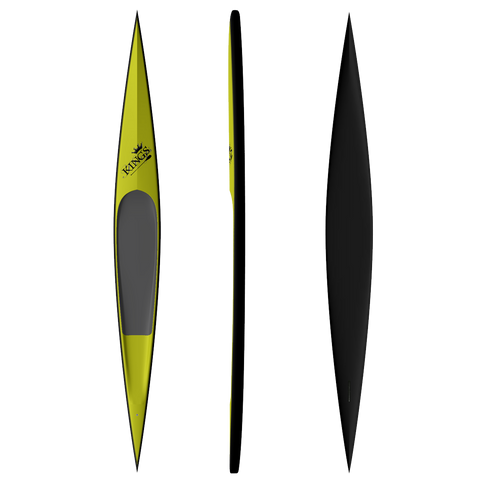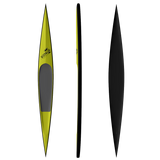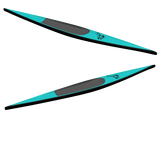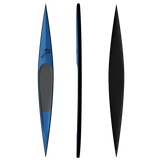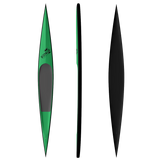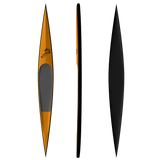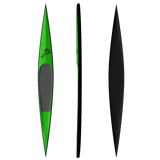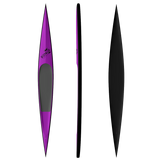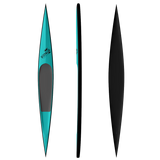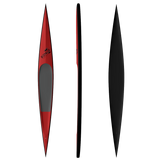Why are King’s Boards so much better?
There is no board in the world as fast, strong and light as a King’s race board. King’s race boards have a very slight V running the entire length of the board--the bow is designed to very gently displace water without causing a wake--the cockpit is sunken so your feet are as close as possible to the surface of the water--the bottom side of the tail has a slight roll allowing the water to gently release off the end of the board. King's boards are engineered to perform. They represent a product where hydrostatic theory, art, craftsmanship, aesthetics and testing all come together to create one of the most highly coveted race boards in the world. King's race boards track straight, are highly stable, are easy to paddle, have unequalled glide, are super fast and have a long list of race wins!
Adding to the great design, King's race boards are constructed using our exclusive carbon fiber vacuum bagging techniques. Vacuum bagging is a technique employed to create mechanical pressure on a laminate during its cure cycle. Pressurizing a composite lamination serves several functions. First, it removes trapped air between layers. Second, vacuum bagging compacts the fiber layers for efficient force transmission among fiber bundles and prevents shifting of fiber orientation during cure. Third, it reduces humidity. Finally, and most important, the vacuum bagging technique optimizes the fiber-to-resin ratio in the composite part. These advantages have for years enabled aerospace and racing industries to maximize the physical properties of advanced composite materials such as Graphite (carbon fiber,) aramid, and epoxy.
What is Fiber-To-Resin Maximization and Why Is It Important?
The reason that composites are used increasingly is the strength-to-weight advantages that they offer. The key to obtaining these advantages is maximizing the fiber-to-resin ratio. The reinforcement (fiberglass, aramid Kevlar® graphite, etc. is not particularly strong in the textile state. As well, thermosetting resins such as polyester and epoxy are quite brittle if cured without reinforcement. If excess resin exists in the laminate, the laminate will have more of the properties of resin only. If too little resin exists, places where the reinforcement is dry will cause weak spots. To optimize the resin content, the entire reinforcement must be saturated with resin with as little excess as possible. The technique of “squeezing out” excess resin to obtain a maximized fiber-to-resin content is the theory of vacuum bagging.
How Much Resin Is Optimum?
Typically, a hand laminate uses in excess of 100% fabric weight by resin. A refined aerospace or racing composite lamination will obtain as little as 40% resin to fabric ratio. Determining the perfect combination for a given lamination is a sophisticated engineering problem but a good target is 60% resin to fabric weight ratio. It is important to recognize that dry spots are “weaker” than resin-rich areas and maximization of fiber-to-resin is relative to a “real-life” fabricator and his or her ability to improve the boards being made. Over the years King’s processes have evolved to a point were our resin to fabric ratios run between 40% to 50%. King’s boards weigh approximately:
18 to 20 lbs. for the 12’6” Elite
20 to 25 lbs. for the 14’ Elite
25 to 30 lbs. for the 19’ Unlimited
Finally, King’s has set the standard by which performance, weight and durability are judged. We take great pride in what we do and sincerely appreciate your taking the time to read and understand the difference between King’s boards and all other brands. In the end, the light weight, strength, stability and speed make the difference. Our race boards are favorites for those of you who are absolutely serious about your equipment and winning races.
King’s Builds some of the fastest Unlimited Race Boards in the World. Call us Today!
;%20background-position:%20center%20center)

